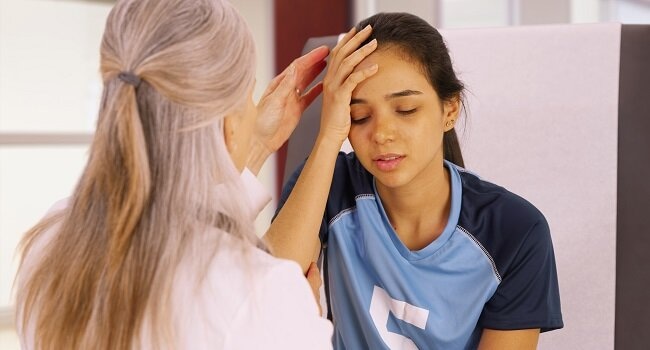Recovering from a concussion goes beyond initial medical care; it often requires a dedicated approach to therapy and rehabilitation. Understanding post-concussion symptoms involves recognizing the wide range of challenges individuals may face after a concussion. These symptoms can include physical discomforts like persistent headaches and dizziness, cognitive impairments such as difficulty concentrating and memory issues, emotional instability, and sleep disturbances.
Each person’s experience with these symptoms can vary, making it crucial to adopt a personalized approach to treatment. Recognizing and addressing these symptoms is a key step in the recovery process, emphasizing the need for targeted rehabilitation strategies tailored to individual needs.
This article delves into the critical role that physical therapy and rehabilitation play in alleviating post-concussion symptoms. Through a blend of expert insights and practical advice, we’ll explore how expert insights and practical advice in physical therapy and rehabilitation can greatly impact those with post-concussion symptoms.
Role Of Physical Therapy In Post-Concussion Symptoms
In the treatment of Post Concussion Syndrome syndrome (PCS), physical therapy plays a critical role aimed at improving patient outcomes. The primary goals include alleviating symptoms, enhancing functional abilities, and facilitating a return to daily activities.
Physical therapists employ various techniques, such as vestibular therapy to address balance and dizziness issues, and strength training to improve physical stability and endurance. Each treatment plan is carefully tailored to meet the specific needs and symptoms of the individual, ensuring a targeted and effective approach to rehabilitation.
Rehabilitation Approaches
The rehabilitation of post-concussion syndrome incorporates various methods tailored to address specific symptoms.
- Cognitive Rehabilitation Therapy
Cognitive rehabilitation therapy aims to improve cognitive functions impaired by a concussion, such as attention, memory, and executive functions. This therapy involves structured tasks and exercises designed to retrain the brain’s ability to process information and solve problems. It’s a critical component of PCS recovery, helping patients regain skills necessary for daily activities and work.
- Vestibular Rehabilitation Therapy
Vestibular Rehabilitation Therapy (VRT) is designed to address balance, dizziness, and spatial orientation issues following a concussion. It involves exercises that help retrain the brain to compensate for changes in the vestibular system. This therapy is crucial for those experiencing vertigo and balance difficulties, improving their stability and reducing fall risks.
- Vision Therapy
Vision therapy for post-concussion syndrome involves exercises and activities designed to improve visual functions that may have been affected by a concussion, such as eye tracking, focusing, and coordination. This therapy aims to alleviate symptoms like blurred vision, sensitivity to light, and difficulties with visual processing, enhancing overall visual performance and comfort in daily activities.
Each of these therapies plays a crucial role in a comprehensive rehabilitation program, designed to target the multifaceted symptoms of post-concussion for effective recovery.
Customizing Treatment Plans
Developing individualized treatment plans is essential in managing post-concussion syndrome, as each patient presents unique symptoms and challenges. A tailored approach targets specific issues and adapts to the patient’s evolving needs during recovery.
Incorporating a team of diverse healthcare professionals into the treatment planning process enhances the depth and breadth of care. This multidisciplinary team may include neurologists, physical therapists, cognitive therapists, and other specialists, ensuring a holistic approach, from physical to cognitive well-being. This collaborative strategy fosters a more comprehensive and effective recovery journey.
Patient Education And Self-Management
Central to the recovery process for post-concussion syndrome is patient education and self-management:
- Stress Reduction Techniques: Providing patients with stress-reduction methods, such as mindfulness meditation, deep breathing exercises, and progressive muscle relaxation, alleviates the emotional burden often associated with PCS.
- Personalized Relaxation Exercises: Tailoring relaxation exercises to address individual symptoms, such as headache relief techniques or exercises to reduce dizziness, ensuring a more personalized and targeted approach to symptom management.
- Guiding Rest And Activity Levels: Patients are educated on recognizing their energy limits, understanding when to rest, and gradually increasing activity levels as tolerated.
- Identify Precise Triggers: Patients receive guidance in identifying specific situations, environments, or activities that have the potential to worsen their symptoms. This includes recognizing specific visual stimuli, stressors, or physical activities that could lead to discomfort.
- Proactive Avoidance: Patients can proactively avoid situations or stimuli that may intensify their symptoms. For instance, if certain lighting conditions worsen their symptoms, they can make informed choices to minimize exposure.
- Adaptive Modification: Beyond avoidance, patients learn how to adapt and modify their surroundings or routines to reduce symptom exacerbation. This may involve adjusting workspaces, managing screen time, or implementing relaxation techniques when encountering triggers.
- Prioritizing Quality Sleep: Ensuring patients understand the critical role of sleep in recovery, they are encouraged to establish healthy sleep routines and habits. This includes sleep hygiene practices, consistent sleep schedules, and addressing sleep disturbances.
- Balanced Nutrition: Patients are educated on the importance of a balanced diet in supporting brain health during recovery. Specific dietary recommendations may include increasing intake of brain-boosting nutrients like omega-3 fatty acids and antioxidants.
By providing patients with the tools and knowledge to self-manage symptoms, they can actively participate in their recovery and enhance their overall well-being.
Conclusion

The journey to recovery from PCS may be complex, but with the right guidance and a personalized approach, the possibilities for reclaiming a fulfilling life become attainable. In closing, the amalgamation of physical therapy and rehabilitation offers renewed optimism for those affected by PCS, illuminating a path toward improved health, functionality, and an enhanced quality of life.


















